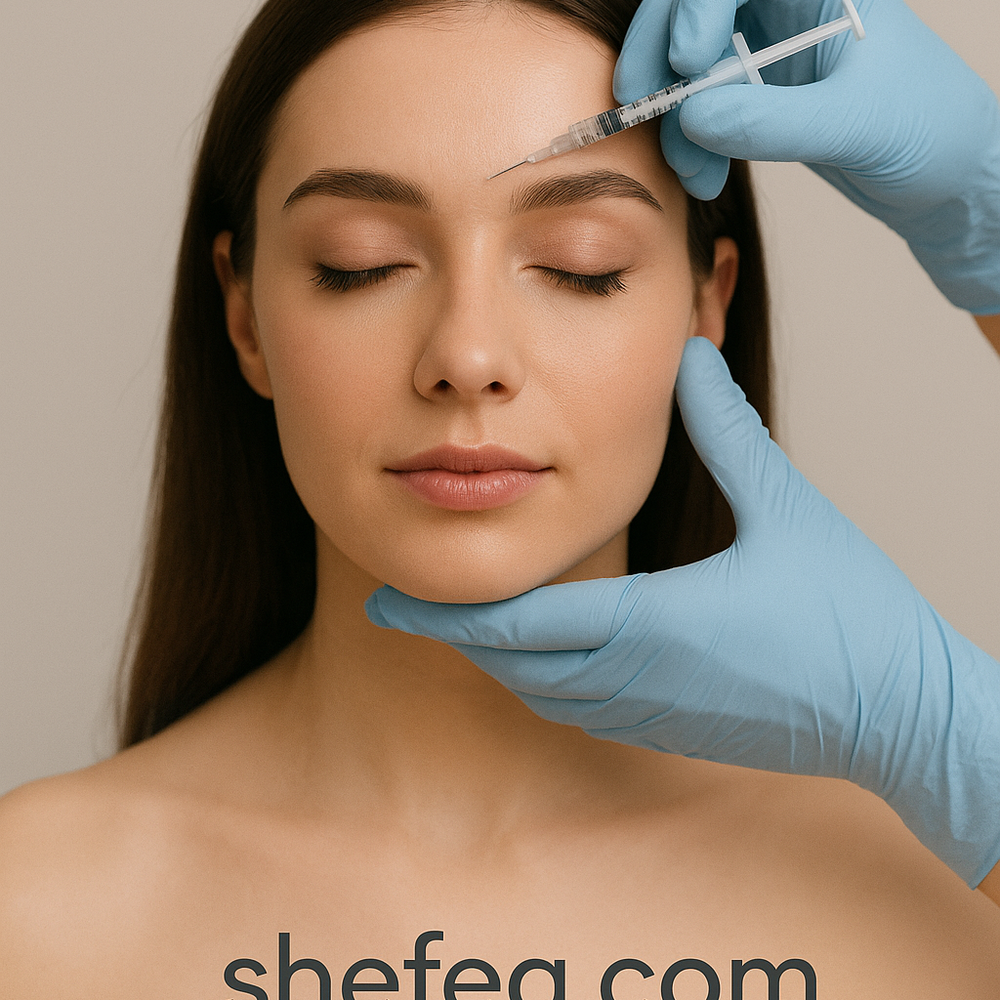Introduction: The Woman Who Lives Through Expressions
A woman's face is her silent book. The fine lines at the corners of her eyes are remnants of past laughter. The crease on her forehead—perhaps from countless worries for her child. Facial expressions are the silent music of emotions.
But suddenly, we wish to "mute" these sounds. Why?
We want to remain beautiful. We desire to look young. We seek a wrinkle-free face.
These desires introduce the concept of Botox into our lives.
However, Botox is not merely an injection—it is an invisible topic of social, emotional, and even ethical discussion.
In this article, we delve into what Botox is, how it works, who it's suitable for, common mistakes, and the true value of a woman's expressions.
I. What Is Botox? – From History to the Enemy of Wrinkles
Botox (botulinum toxin) is a poison derived from the bacterium Clostridium botulinum, which temporarily blocks nerve endings. Yes, it's a toxin. But in micro doses and when applied correctly, it works wonders in aesthetic medicine.
Brief History:
-
1820 – The nerve-blocking effect is first studied.
-
1980s – Used for eye muscle spasms and disorders.
-
2002 – Approved by the FDA for cosmetic purposes in the USA.
Today, Botox is one of the most widely used aesthetic procedures globally.
II. How Does Botox Work? – The Silence That Halts Movement
Normally, our muscles move through nerve impulses. Botox temporarily "cuts" the connection that causes muscles to contract, squeeze, or bend. As a result, the muscle relaxes, doesn't move, and wrinkles don't form.
Most Common Application Areas:
-
Forehead wrinkles
-
Between the eyebrows ("frown lines")
-
Crow's feet (lines at the corners of the eyes)
-
Lines above the nose
-
Lines above the lips
-
Neck lines
How Long Does the Effect Last?
-
3–6 months
-
Muscle activity then resumes
-
Repeat sessions extend the results but don't create permanent freezing
III. What Is the Purpose of Botox? – Beauty or Isolated Expressions?
The goals of Botox:
-
Eliminate fine wrinkles
-
Prevent deepening of expression lines
-
Give the face a calmer and "rested" appearance
But this raises a question:
Does the loss of expressions beautify a woman, or does it silence her?
IV. Research and Scientific Perspective:
Studies indicate:
-
Botox reduces wrinkles but can lead to diminished facial expressions.
-
74% of women report using fewer expressions after Botox.
-
In some cases, this leads to passivity in emotional reactions.
Psychological Viewpoint:
Our face is a tool for social connection. Smiling, frowning, squinting—these are primary ways of conveying emotions among people.
When Botox weakens this function:
-
Social connections may become distant.
-
Reading emotions becomes challenging.
-
Individuals may become passive in expressing certain feelings.
V. Social Pressure: Why Do Women Get Botox?
The answer is both simple and profound:
-
"I must look young."
-
"Aging should be invisible."
-
"My husband looks at younger women."
-
"Looking young is essential at work."
-
"I want to look good in selfies."
Society forbids women from aging, denies them the right to wrinkles.
Thus, Botox becomes not just an aesthetic choice but a social defense mechanism.
VI. How Is Botox Administered? – Safe Application Guidelines
Main Steps:
-
Consultation: The doctor examines the face and maps out expression lines.
-
Cleansing: Preparing the skin.
-
Application: The substance is injected into active muscle points using needles smaller than 1 mm.
-
Calming: Cold compress and 10–15 minutes of observation.
Procedure Duration:
-
10–20 minutes
Repetition:
-
Every 3–6 months
VII. Who Is It Suitable For and Who Should Avoid It?
Suitable For:
-
Individuals over 25 years old
-
Women beginning to develop expression lines
-
Those with excessive sweating (hyperhidrosis)
-
Individuals with deep frown lines
-
Those with skin around the eyes that wrinkles quickly
Not Suitable For:
-
Pregnant and breastfeeding women
-
Individuals with neuromuscular disorders
-
Those with skin infections
-
Individuals prone to allergic reactions
VIII. Mistakes and Risks of Botox
Common Mistakes:
-
Overdosing – Complete loss of facial expression
-
Incorrect muscle application – Unnatural appearance
-
Frequent repetition – Muscle weakening and a sense of dependency
-
Application by unqualified individuals
Side Effects:
-
Swelling, bruising
-
Headache
-
Asymmetric eyebrow elevation
-
Drooping eyelids (temporary)
Most crucial factor: Certified, experienced doctor and original product.
IX. Natural Expressions – The Forgotten Beauty
Every expression is part of a woman's identity. Sometimes, the line on her forehead symbolizes her inner strength.
The lines at the corners of her eyes—formed from looking at loved ones.
If a woman is ashamed of her expressions, it's no longer a cosmetic issue but a moral crisis.
X. Life After Botox: The Changing Woman
Many women after Botox:
-
Look in the mirror more often
-
Feel less tired
But some say, "I don't feel," "I'm expressionless."
This is the dual nature of Botox—sometimes freedom, sometimes limitation.
Conclusion: Should Expressions Disappear? – Perhaps Not...
Botox is a choice. But remember when deciding:
-
Expression is not weakness—it is feeling.
-
Wrinkles are not aging—they are life.
-
Facial expression should not be artificial—it should be genuine.
You live through your expressions. They explain you without words.
If you get Botox, don't just hide the wrinkle—don't hide yourself.
Final Question:
Do you preserve your expressions, or do you silence them?
Write to us—because your expression could be someone else's mirror.

